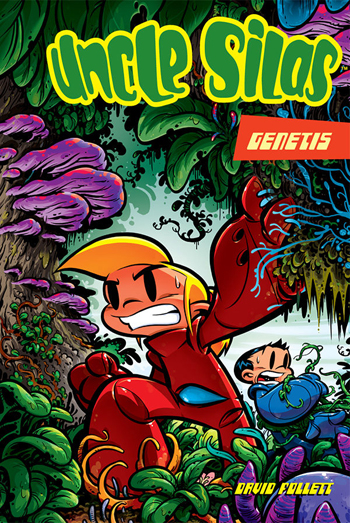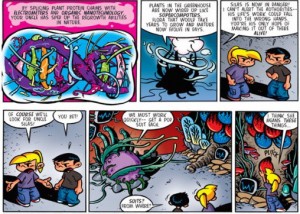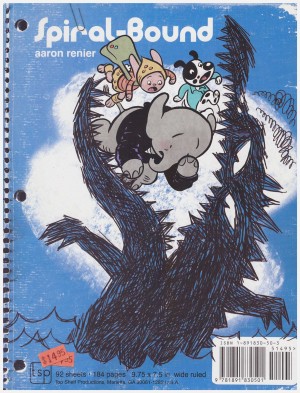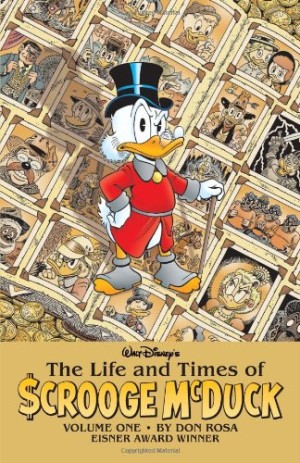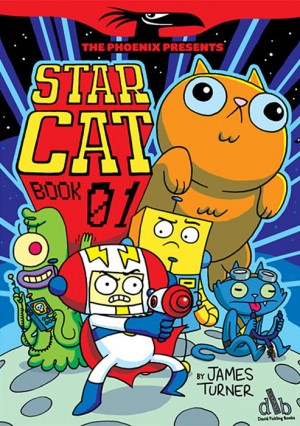Review by Cefn Ridout
Originally conceived as a newspaper comic strip for Adelaide’s Funday Telegraph in 2005, David Follett’s Uncle Silas: Genetis went on to win Dark Horse Comic’s ‘New Recruits’ program, and finally saw publication five years later. The long gestation period appears to have paid off in this amusing, inventive and assured graphic novel debut that sets the scene for a proposed series of eco-conscious science-fiction escapades starring the aptly named Mulch family.
When their uncle Silas Mortimer Mulch, a tree-hugging mad scientist with well-meaning delusions of grandeur goes missing in his mysterious greenhouse-turned-rainforest, quarrelsome pre-teen siblings Selena and Tommy set out to find him, with help from S.O.F.I.A, Silas’ secretive, organic supercomputer. Clad in modish hi-tech pod suits and armed only with their wits and digital savvy, not to mention high-velocity plant tranquilisers, the bright, spirited Selena and her impetuous, headstrong brother encounter all manner of delights and dangers in their uncle’s rapidly evolving bio-tech garden of Eden. From fungi-based networks and holographic databases to killer carp and malicious tree sprites to sentient weeds and zombie fish, the intrepid duo learn the hard way about self-reliance, teamwork and the inescapably symbiotic relationship between humankind and nature… while Australia’s fate hangs in the balance.
For all its techno trappings and environmental caveats, Uncle Silas: Genetis is an entertaining, old-school adventure that nonetheless feels fresh, smart and unpredictable, while retaining a larrikin sensibility that wouldn’t be out of place in a Ginger Meggs yarn. As befits his background in animation, Follett’s kinetic cartooning style, spiced with a dash of Japanese anime, lush colouring and confident draughtsmanship perfectly convey his action and idea packed story, while also capturing all too rare moments of Miyazaki-like magic, such as the dreaming forest sequence.
Unfortunately, the story’s blistering pace and continuous flurry of discoveries gives the characters, let alone the readers, little time to reflect on their predicament or the wonders they are witnessing. This is compounded by the episodic, two-tiered newspaper comic strip structure and the book’s compact size, which constrains the artwork and storytelling, and produces some clunky exposition and occasionally jerky narrative. That said, Follett has cunningly put so much into play in this first volume and hinted at even more that a second outing can’t be too far away. Let’s hope future exploits of the family Mulch will have more room to manoeuvre in an appropriately expanded format.
